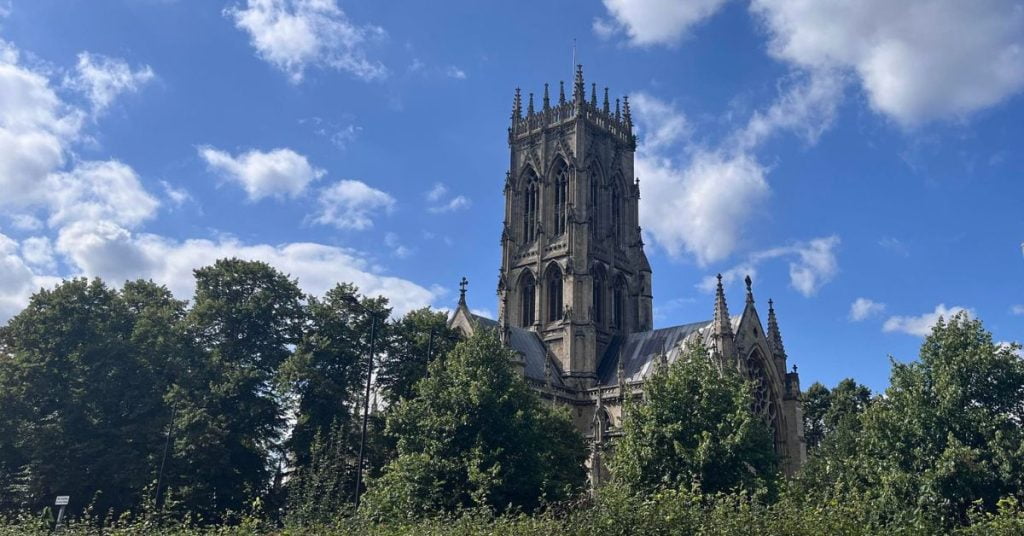Nestled in the heart of South Yorkshire, Doncaster is a city rich with history, culture, and vibrant modern life. Named after the winding River Don, this urban gem is the administrative hub of the City of Doncaster metropolitan borough and the second-largest settlement in South Yorkshire, trailing only behind Sheffield. With a population of 87,455 as of the 2021 census and a broader metro area housing 308,100 residents, Doncaster is a beacon of historical and contemporary significance.
A Historic Tapestry
Doncaster’s story begins long before the modern cityscape took shape. The roots of this city stretch back to Roman times when it was known as Danum. Established around a fort in the 1st century CE, Doncaster served as a crucial staging post for the Romans, bridging the gap between Lincoln and York. The Antonine Itinerary and the Notitia Dignitatum highlight its importance in Roman Britain, marking it as a vital node in the network of Roman roads. The remnants of this ancient past still echo in the town’s layout, with significant archaeological finds like the Danum shield and inscribed altars offering glimpses into its storied heritage.
Medieval Melange
As the Roman Empire faded, Doncaster evolved into a bustling medieval town. Known as Cair Daun in early records and one of the 28 British cities listed in the 9th-century *History of the Britons*, Doncaster was a thriving Anglo-Saxon burh. The name “Doncaster” itself is a blend of Old English terms: “Don-” referring to the river, and “-caster” from the Latin *castra*, meaning military camp. By the 12th century, the town had garnered significant attention, with Nigel Fossard refortifying it and constructing the formidable Conisbrough Castle.
Doncaster’s medieval charm is further illustrated by its involvement in events like the Pilgrimage of Grace in 1536, a significant rebellion against Henry VIII’s dissolution of monasteries. Its streets, such as Baxtergate and Frenchgate, offer a glimpse into the city’s past, reflecting the local trades and Norman influence. The town’s fortifications, including four substantial gates, showcased its strategic importance and are commemorated today with modern markers like the Boar Gates and Roman Gates.
Modern Marvels
Fast forward to the 19th century, and Doncaster was on the cusp of transformation. The advent of the rail network in 1848 was a game-changer, with the Great Northern Railway establishing a significant presence in the town. This period of growth saw the rise of substantial infrastructure, including the Doncaster Corn Exchange, a symbol of the city’s vibrant market life. Although the original Corn Exchange was destroyed by fire, its legacy endures in the rebuilt structure of 1994.

Doncaster’s modern era is also marked by its decadent array of stately homes and architectural treasures. Cusworth Hall and Brodsworth Hall stand as testaments to the city’s affluent past, while the Mansion House on High Street exemplifies its luxurious 18th-century architecture. The city’s strategic location along the Great North Road (A1) has cemented its role as a critical transportation hub, linking London to Edinburgh and further enhancing its importance.
A City Reborn
In 2022, Doncaster achieved a new milestone in its history by being granted city status as part of the Platinum Jubilee Civic Honours. The formal ceremony, attended by King Charles III and Queen Camilla, marked a proud moment for this historic city, celebrating its past while looking towards a promising future.
From its ancient Roman origins to its vibrant modern landscape, Doncaster offers a captivating journey through time. Whether strolling through its historic streets, exploring its medieval legacy, or marvelling at its modern achievements, Doncaster truly has a living tapestry of history, culture, and contemporary life.
Would you like to feature your blog on our website? Contact us.

